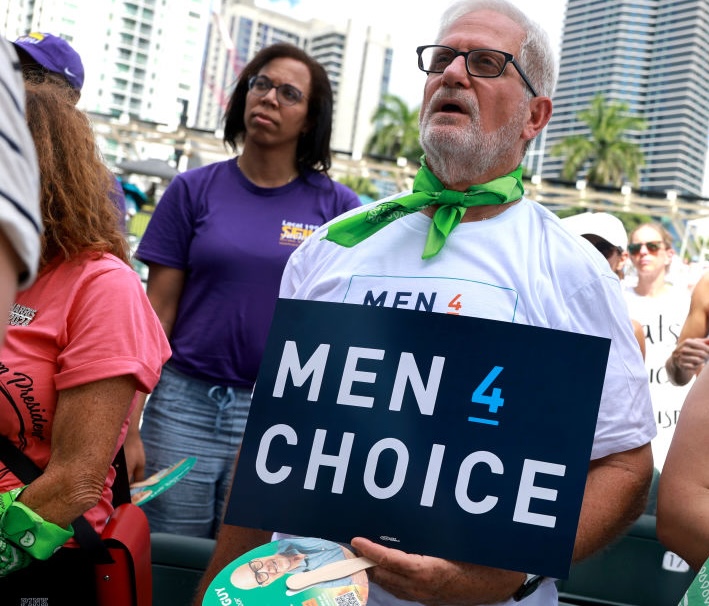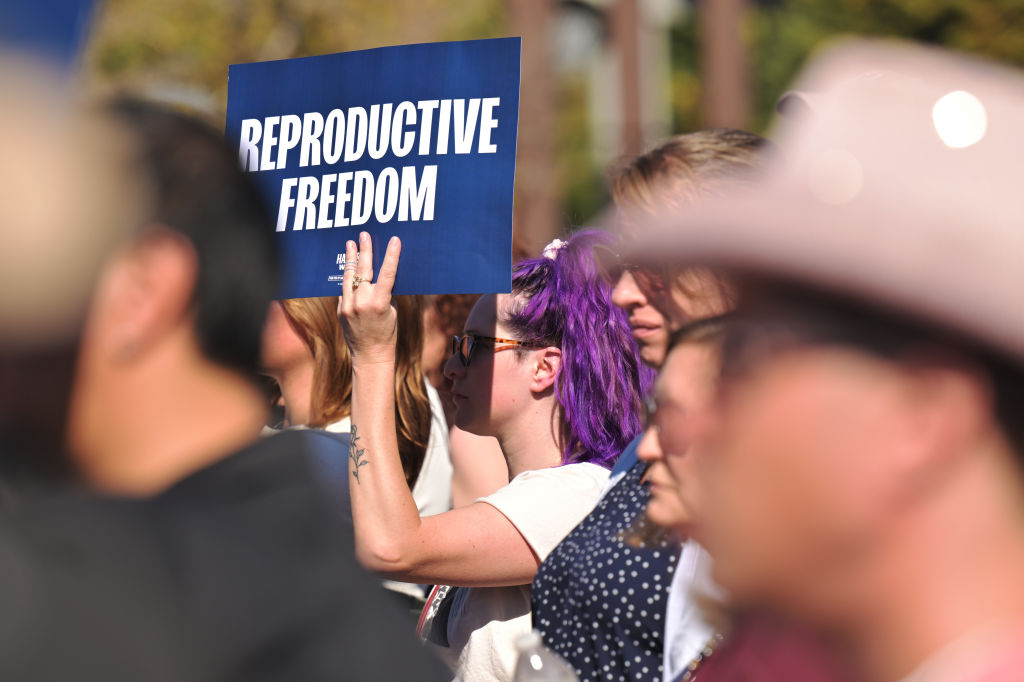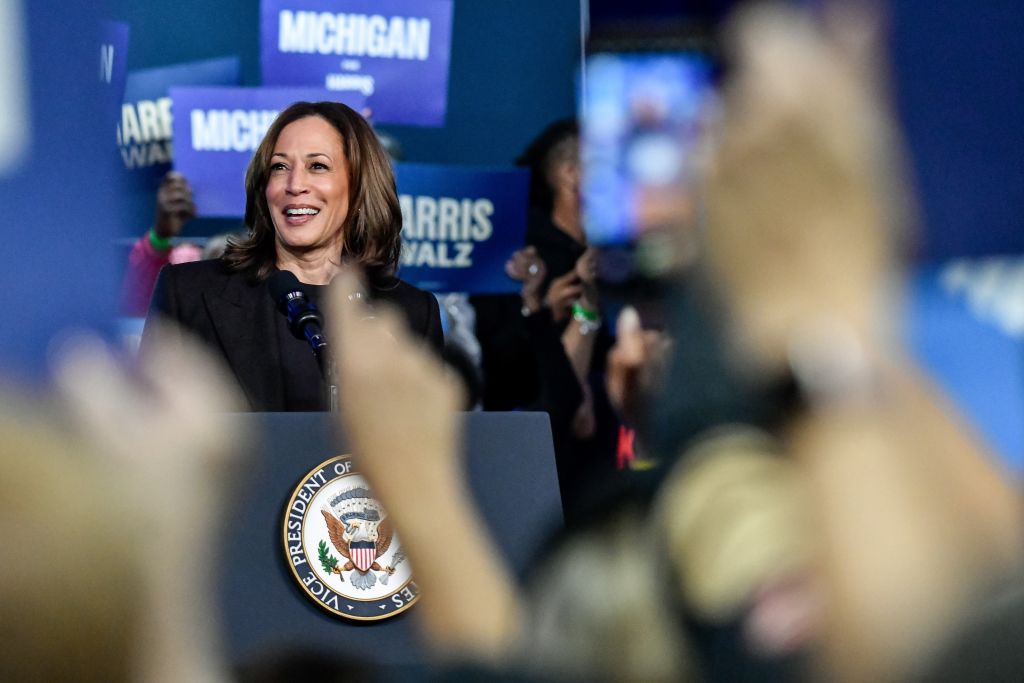“Abortion” and “care” are highly intertwined and reinforced in voters’ minds. Candidates discussing support for the two issues together can help convince swing voters.

With the end of the federal constitutional right to abortion, followed by swift action by many conservative states to implement abortion bans, abortion rights have become the hottest of issues in this fall’s elections. At the same time, the rising costs of caregiving, including the lack of affordable childcare and paid family and medical leave, are bringing families to the brink and commanding attention from candidates up and down the ballot.
One important dynamic that hasn’t received much attention in this election so far is how the issues of “abortion” and “care” are highly intertwined and reinforced in voters’ minds. For many women, anger over the war on their fundamental right to control their own bodies is compounded by their inability to care for their families in the way they know is best.
It’s no surprise that women want to chart their own futures. But new polling, conducted by Global Strategy Group, for the Campaign for a Family Friendly Economy and Child Care for Every Family Action, shows that this resonance goes beyond pro-choice women, and can affect the voting decisions of key groups of undecided or swing voters—namely men under 55, white men, and non-conservative Independents and Republicans. The research shows these groups are more likely to switch their vote to a candidate who supports abortion rights and care investments, more than support for abortion alone. This is important—especially considering the many close races this year for federal and state offices.
This surprising result is best achieved, according to this new data, by talking to these voters about important family decisions within the context of freedom—freedom for families to decide themselves when to have children, and to have the ability to access childcare, elder care and paid leave when needed.
Voters recognize that the government shares responsibility to ensure families have access to the tools and opportunities they need to build a better life—childcare and elder care they can afford, paid family and medical leave when they need it, and professional wages for care workers.

A freedom framework isn’t new—we’ve seen it used effectively to talk about issues from abortion rights to book banning and censorship. What’s new is data demonstrating the hefty political effect of combining abortion and care together.
Voters also recognize the economic benefits of a combined caregiving and abortion rights agenda. They believe that this agenda will have a positive impact on jobs, the economy and workers, especially parents in the workforce. More than seven in 10 voters (73 percent) believe the combined agenda will have a positive impact on parents in the workforce, and two-thirds believe it will have a positive impact on workers in general (67 percent). A clear majority of voters believe it will have a positive impact on the overall economy and jobs (50 percent and 53 percent, respectively).
Increasingly, voters recognize that the government shares responsibility to ensure families have access to the tools and opportunities they need to build a better life—childcare and elder care they can afford, paid family and medical leave when they need it, and professional wages for care workers. Today, 74 percent of voters believe that tax dollars should be used to increase funding for childcare and early education programs.
Simultaneously, there’s no denying that our care systems are in crisis. A projected loss of millions of childcare slots has created anxiety for parents and childcare workers everywhere. It is more and more clear to voters that businesses, and our economy as a whole, suffer when people can’t work due to lack of affordable childcare or an absence of paid leave.
Vice President Harris has consistently emphasized reproductive rights and access, and the need for quality, affordable childcare and paid family and medical leave. Minnesota Gov. Tim Walz signed a statewide paid family and medical leave bill into law, and increased state childcare funding when federal funds expired. Combining a strong caregiving agenda with the restoration of abortion rights only increases the saliency of these issues with voters and provides good reason for candidates up and down the ballot to stump on them.

As 501(c)(4) funders who have invested millions of dollars in advocacy efforts to advance care reforms, we know these policies are overwhelmingly popular. And yet, we’ve learned the hard way that best-in-class policy advocacy can be insufficient to bring about transformative change. Does broadening our message to link abortion rights and care reforms also expand our ability to reach additional, untapped supporters? This research concludes that the answer to that question is yes.
There must be a political mandate to achieve this change. Advocates want to make passing transformational care reforms inevitable and non-negotiable for federal lawmakers. To do that, they must unequivocally demonstrate voter demand.
Care is a winning issue. Abortion access is a winning issue. Putting these priorities together front and center in every election gets us closer to passing critical policies and sustaining them for generations to come.
At Ms. magazine, our mission is to deliver facts about the feminist movement (and those who stand in its way) and foster informed discussions—not to tell you who to vote for or what to think. We believe in empowering our readers to form their own opinions based on reliable reporting. To continue providing you with independent feminist journalism, we rely on the generous support of our readers. Please consider making a tax-deductible donation today if you value the work we do and want to see it continue. Thank you for supporting women’s voices and rights.





